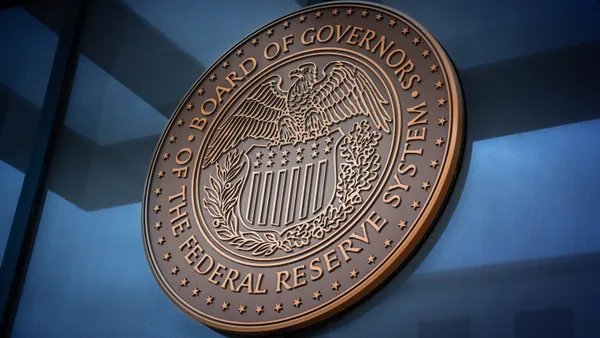Goldman Sachs plans to cut a few hundred employees as part of its annual review process to trim underperformers, The Wall Street Journal reported Friday.
The process will dismiss 3% to 4% of the lender’s global workforce, affecting an estimated 1,300 to 1,800 employees across various departments, people familiar with the matter told the publication. However, a Goldman spokesperson, Tony Fratto, told Banking Dive that the numbers the Journal reported were inaccurate.
Goldman employed roughly 44,300 people as of June. Annual reviews have started and will continue through the fall, one of the people familiar with the matter told the Journal.
The reviews, which typically result in a cull of 1% to 5% of Goldman’s staff, were restored in 2022 after they were paused during the COVID-19 pandemic.
“Our annual talent reviews are normal, standard and customary, but otherwise unremarkable,” Fratto said in an emailed statement to Banking Dive. “We expect to have more people working at Goldman Sachs in 2024 than 2023.”
Last year, in early September, Goldman prepared for a cut of at least 450 staff in the month that followed. The impacted group included those in investment banking and trading. Those cuts marked the fourth round of layoffs Goldman planned in 12 months, including roughly 3,200 in January 2023.
One of the variables used to determine the layoff process includes in-office attendance, according to the Journal. Goldman has been pushing since 2021 for employees to work from the office five days a week — especially investment bankers.
September, coincidentally, often starts a period of measurable change at financial institutions. Citi last September launched a significant reorganization that may reduce the bank’s headcount by 20,000 by 2026.
Truist last September also unveiled plans for “sizable reductions” to its workforce amid a $750 million cost savings plan.
Goldman isn’t immune to autumnal changes, either. The bank’s 2022 turn away from consumer banking came in October.
Goldman’s layoff news comes close on the heels of winning a dispute with the Federal Reserve regarding its stress test results. The Fed reduced Goldman’s stress capital buffer requirement to 6.2% for the fiscal year starting Oct.1 — down from 6.4% the Fed suggested in June when it posted annual stress test results.
That could free up roughly $100 million the bank can use to boost lending, trading or other activities, the Financial Times reported.
Goldman has seen an upturn in some metrics, too. The bank reported 21% higher investment banking fees in this year’s second quarter, compared with the same period last year. Goldman’s revenues in asset and wealth management jumped 27% year over year, the bank reported in July.















